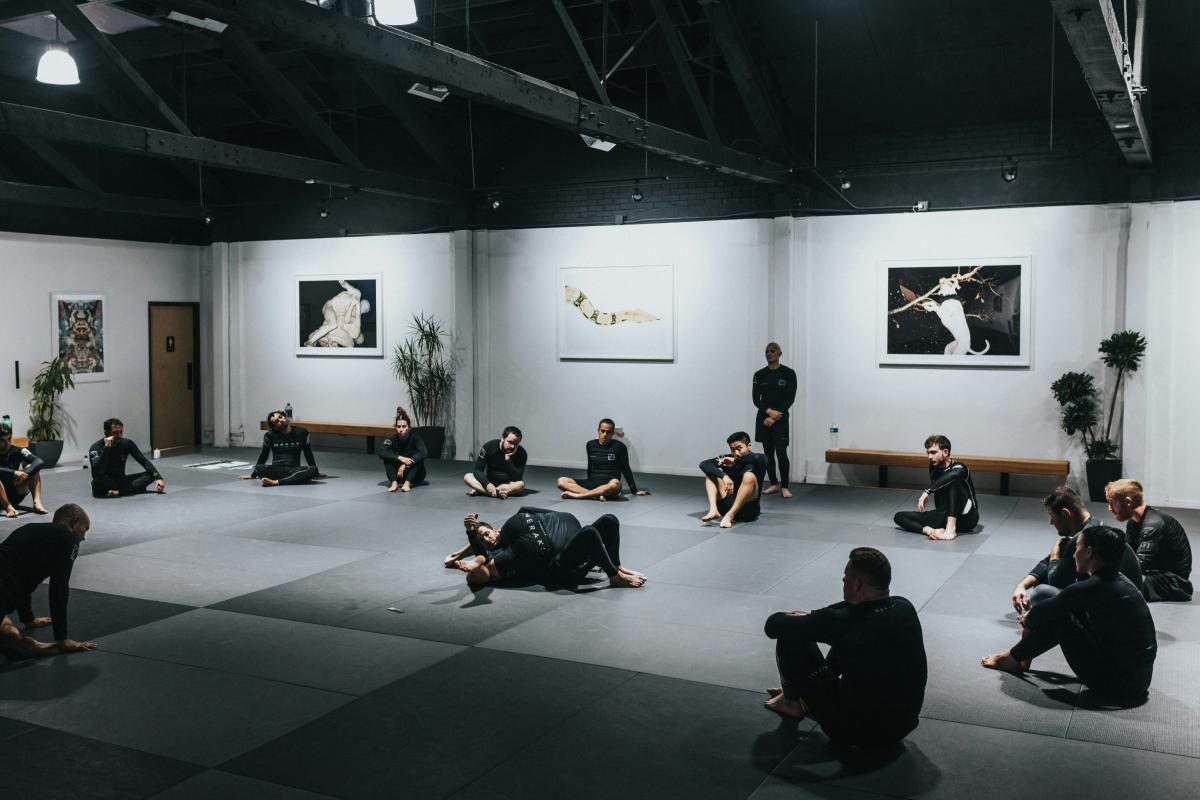Introduction to Martial Arts
Martial arts, a diverse range of activities that blend physical exercise, mental discipline, and self-defense skills, have long captivated individuals across the globe. Their historical significance can be traced back thousands of years, with roots steeped in the cultural practices of various civilizations. Typically associated with self-defense techniques, martial arts have evolved to encompass a variety of styles and philosophies, each with its unique characteristics and underlying principles.
The primary purpose of martial arts extends beyond mere self-defense; they serve as a holistic approach to well-being, fostering physical fitness, mental health, and personal discipline. Practitioners engage in rigorous training that challenges their endurance, strength, and agility while enhancing their mental fortitude. Through consistent practice, martial artists develop not only the necessary skills to protect themselves but also a sense of confidence and resilience that permeates other aspects of life.
Throughout the years, martial arts have adapted and transformed, influenced by the cultural and societal changes in various regions. For instance, traditional styles such as Karate and Judo emerged from Japan, while Kung Fu has its origins in China. In contrast, more contemporary forms like Brazilian Jiu-Jitsu and Muay Thai have gained prominence in recent decades, emphasizing different techniques and approaches to combat and fitness. Understanding the myriad styles available is crucial for individuals interested in taking up martial arts, as it allows them to choose one that aligns with their personal goals and interests.
Ultimately, the world of martial arts is as rich as it is diverse, offering practitioners numerous paths to personal growth and empowerment. This exploration into different styles enables individuals to discover the right fit for their journey, ensuring that the benefits extend beyond the dojo and into every facet of their lives.
Karate: The Way of the Empty Hand
Karate, often translated as "the way of the empty hand," is a martial art with its origins in Okinawa, Japan. It emerged during the early 20th century, shaped by native Okinawan fighting styles combined with external influences, particularly from Chinese martial arts. This fusion resulted in a unique discipline that emphasizes striking techniques such as punches, kicks, knee strikes, and elbow strikes, making it a versatile art form suitable for self-defense and competition.
The core techniques of Karate are categorized into three major components: kihon (basics), kata (forms), and kumite (sparring). Kihon entails fundamental techniques and movements that serve as the foundation for more advanced practices. Practicing these basics instills proper body mechanics, speed, and power. Kata, on the other hand, are pre-arranged sequences of movements that simulate combat scenarios. They allow practitioners to refine their skills, promote muscle memory, and instill discipline. Kumite, which focuses on controlled sparring, provides practitioners with the opportunity to apply their techniques in a dynamic setting, enhancing reflexes and adaptability.
Karate is characterized by its emphasis on mental discipline and respect for others. Practitioners are taught to embody principles such as humility, perseverance, and courtesy, which are integral to personal development both inside and outside the dojo. The martial art has gained immense popularity globally, leading to the establishment of numerous Karate tournaments and organizations. Events such as the World Karate Federation championships have showcased elite talent and fostered international camaraderie among practitioners. As Karate continues to evolve, its presence remains significant in martial arts communities worldwide, promoting not only physical fitness but also cultural exchange and personal growth.
Taekwondo: The Art of Kicking and Punching
Taekwondo, a dynamic martial art originating from Korea, is internationally recognized for its high kicks and rapid striking techniques. The term "Taekwondo" translates to "the way of the foot and fist," aptly encompassing the art's emphasis on kicking and punching. With roots extending back over 2,000 years, Taekwondo has evolved significantly, integrating various influences while maintaining its core philosophies and training methodologies.
At its essence, Taekwondo is characterized by its focus on high, fast kicks, which not only serve as a means of self-defense but also promote agility and flexibility. Practitioners often engage in extensive practice to master kicking techniques such as the front kick, roundhouse kick, and side kick. These skills are not only critical for competition but also play a vital role in self-discipline and self-improvement, central tenets of Taekwondo training.
There are notable distinctions between Olympic Taekwondo and traditional forms. Olympic Taekwondo, which emerged as an official sport in the 2000 Sydney Olympics, emphasizes sparring, point-based competition, and the application of sport-specific techniques. In contrast, traditional Taekwondo focuses on a broader spectrum, including forms (hyung), self-defense techniques, and the cultivation of mental attributes such as respect, humility, and focus. This comprehensive approach nurtures both the physical and psychological aspects of martial arts practice.
Today, Taekwondo is one of the most popular martial arts in the world, with millions of practitioners spanning across countries and cultures. Its appeal lies not only in the fitness benefits it provides but also in the sense of community it fosters. Competition in Taekwondo offers aspiring athletes a platform to showcase their skills, embodying the spirit of martial arts while promoting sportsmanship and camaraderie among participants.
Judo: The Gentle Way
Judo, which translates to "the gentle way," originated in Japan in 1882, founded by Jigoro Kano. This martial art emphasizes skill, technique, and strategy over brute strength, offering practitioners a unique approach to self-defense and physical fitness. Judo is primarily composed of three main techniques: throws, grappling (known as ne-waza), and submissions. Unlike striking arts, such as karate or boxing, Judo focuses on using an opponent's weight and momentum against them, allowing even smaller or weaker individuals to effectively defend themselves.
The core philosophy of Judo is encapsulated in the principle of "maximum efficiency with minimum effort." This concept encourages practitioners to maximize their physical capabilities, using the least amount of energy necessary to accomplish their goals. Through this efficient methodology, students learn to rely on technique and timing rather than sheer force, fostering a deep understanding of body mechanics and movement dynamics. As such, Judo promotes not only physical prowess but also mental discipline and respect for others, reinforcing its position as a holistic martial art.
Participation in Judo competitions is an integral part of the practice, providing a framework for assessing skill development and mastery of techniques. Competitions can vary in level, ranging from local tournaments to international events, and they follow a structured set of rules governing scoring and match conduct. In these events, judokas wear a traditional uniform called a judogi and compete on a specialized mat known as tatami.
Judo practitioners advance through a structured belt system, which signifies their proficiency and experience. Beginners usually start with a white belt, progressing through various colors until they reach the black belt, symbolizing mastery. In conclusion, Judo not only serves as a practical form of self-defense but also cultivates personal growth, resilience, and community among its practitioners.
Brazilian Jiu-Jitsu: The Art of Taking the Fight to the Ground
Brazilian Jiu-Jitsu (BJJ) is a martial art that has gained immense popularity over the past few decades, particularly in the realm of mixed martial arts (MMA). Originating from traditional Japanese Jiu-Jitsu, BJJ was adapted and expanded by the Gracie family in Brazil during the early 20th century. This evolution emphasized ground fighting techniques, focusing on submissions and positional control, differentiating it from its predecessors.
At its core, Brazilian Jiu-Jitsu revolves around the principle that a smaller, weaker individual can successfully defend against a larger opponent by utilizing leverage, technique, and strategy. This aspect makes it accessible to practitioners of all sizes and ages, as success is not solely dependent on brute strength. Instead, BJJ teaches practitioners to efficiently use their body mechanics, allowing them to effectively counter and control opponents, predominantly on the ground.
The techniques taught in BJJ include a variety of holds, guard positions, and submission methods such as chokes and joint locks. Practitioners are trained to flow seamlessly between these techniques during sparring (often referred to as "rolling"), enabling them to adapt to ever-changing scenarios in real-time. This adaptability has contributed to BJJ's rise as a fundamental discipline within mixed martial arts competitions, where ground fighting tactics play a crucial role in determining the outcome of bouts.
As BJJ schools and academies proliferated worldwide, the martial art transitioned from its Brazilian roots to a global phenomenon. Competitions, seminars, and dedicated training camps have sprouted in numerous countries, furthering the art's reach and attracting a diverse range of participants. The emphasis on personal development, community, and the art of taking the fight to the ground resonates with many, ensuring that Brazilian Jiu-Jitsu remains a vital and dynamic component of the martial arts landscape.
Muay Thai: The Art of Eight Limbs
Muay Thai, often referred to as the "Art of Eight Limbs," is a combat sport originating from Thailand. This martial art has a rich history, tracing back centuries to its origins as a battlefield fighting technique known as "Muay Boran." Throughout its evolution, Muay Thai has maintained its traditional aspects while also adapting to contemporary needs, especially in the realm of mixed martial arts (MMA).
The unique characteristic of Muay Thai lies in its use of eight points of contact, which includes punches, elbows, knees, and shins. This technique allows practitioners to deliver powerful strikes from various angles, making it a versatile fighting style. Training in Muay Thai involves rigorous sessions that include not only physical conditioning but also the development of striking skills and defensive techniques. Fighters typically undergo extensive pad work, shadow boxing, and sparring to hone their abilities.
Culturally, Muay Thai is more than just a sport; it is deeply ingrained in Thai history and national identity. The sport is often accompanied by traditional music and dance rituals, notably the “Wai Khru,” a ceremonial dance performed by fighters before a bout. This serves as a form of respect to their teachers and the sport itself. Additionally, Muay Thai has gained international recognition, leading to its incorporation into MMA training programs worldwide, where its striking techniques are highly valued.
Over the years, Muay Thai has gained prominence both as a sport and a discipline, attracting practitioners from various backgrounds. Its emphasis on mental fortitude, discipline, and respect enhances its appeal, making Muay Thai a respected avenue for those seeking physical and personal development. The ongoing growth of this martial art highlights its significance in the ever-evolving landscape of combat sports.
Kung Fu: The Culturally Rich Martial Art
Kung Fu, a term that broadly encompasses a variety of Chinese martial arts, is notable for its deep roots in Chinese history and philosophical teachings. The evolution of Kung Fu traces back thousands of years, intertwining with aspects of Chinese culture, spirituality, and social practices. This martial art is not only a form of physical exercise but also a discipline that cultivates the mind and spirit, adhering to principles derived from traditional Chinese philosophies such as Confucianism, Taoism, and Buddhism.
Within the realm of Kung Fu, there are numerous styles, each boasting unique techniques and philosophies. Two of the most recognized styles are Wing Chun and Shaolin. Wing Chun is characterized by its close-range combat techniques and rapid, powerful strikes, providing a practical approach to self-defense. It emphasizes principles such as efficiency and directness in movements. In contrast, Shaolin Kung Fu, originating from the Shaolin Temple, incorporates a broader range of techniques, including kicks, punches, and complex forms or "katas" that reflect graceful movements derived from animal mimicry. Both styles not only enhance physical capabilities but also promote mental focus and agility.
The significance of Kung Fu within Chinese culture extends beyond physical combat. It symbolizes resilience and discipline, and it serves as a representation of traditional values. The art has penetrated global media, often glamorized through films and television. Iconic martial artists like Bruce Lee and Jackie Chan have played pivotal roles in popularizing Kung Fu around the world, portraying it as an art form rich in philosophy, technique, and culture. The global fascination with Kung Fu continues to grow, inviting new practitioners to explore its profound connections to life, discipline, and spirituality.
Capoeira: The Dance of Fight
Capoeira is a unique Brazilian martial art that intricately blends elements of dance, acrobatics, and rhythm, creating a dynamic and captivating performance art. Originating in Brazil during the 16th century, it was developed by enslaved Africans who sought to preserve their cultural identity amidst oppression. Capoeira served not only as a means of self-defense but also as a form of resistance against the brutalities of slavery, allowing practitioners to express their freedom and resilience through movement.
One of the distinguishing features of Capoeira is its fluid, dance-like movements that embody both grace and power. Practitioners, known as capoeiristas, engage in a practice called "jogo" (game), where two players interact in a circular formation, showcasing a variety of kicks, spins, and acrobatic tricks. The significance of rhythm is paramount in Capoeira; it is often performed to the accompaniment of traditional musical instruments such as the berimbau, atabaque, and pandeiro. The music establishes the tempo and style of the game, infusing it with an infectious energy that enhances both the physical and emotional experience of the participants.
The training methodology of Capoeira involves not only physical conditioning but also an understanding of its cultural heritage. Aspiring capoeiristas learn to develop agility, strength, and coordination while simultaneously engaging with the music and community aspects inherent in the practice. This emphasis on rhythm and flow allows students to cultivate a deeper connection with the art form, fostering a sense of belonging and cultural pride.
As Capoeira continues to evolve, it remains a powerful symbol of resistance and cultural expression, attracting practitioners from diverse backgrounds and around the globe. Through its rich history and unique blend of art and martial technique, Capoeira exemplifies the enduring spirit of those who created it, embodying a legacy of resilience, creativity, and community.
Conclusion: Choosing the Right Martial Art for You
Practicing martial arts offers numerous benefits that extend beyond physical fitness. It promotes discipline, enhances self-confidence, and aids in stress relief. With a variety of styles available, such as Karate, Taekwondo, Brazilian Jiu-Jitsu, and Muay Thai, potential practitioners have a myriad of options to explore. Each style has its unique characteristics and approaches, making it essential for individuals to contemplate their personal goals and preferences when deciding which martial art resonates with them.
For beginners, the first step is to assess one's physical capabilities and interests. Some may prefer the striking techniques of kickboxing or the grappling focus of Judo, while others might be drawn to the traditional forms and philosophy of Kung Fu. Understanding what appeals most can significantly influence one's martial arts journey. Additionally, researching the schools or dojos in the area is crucial. Look for trained instructors who emphasize safety, respect, and personal growth to create a conducive learning environment.
Trying out different classes can also provide a clearer understanding of what to expect from various styles. Many dojos offer introductory classes or trial memberships, allowing newcomers to experience firsthand the atmosphere and instructional methods. Engaging with fellow practitioners and instructors can also provide invaluable insights into the community and culture surrounding the chosen martial art.
Ultimately, the right martial art is the one that aligns with your aspirations and lifestyle. Whether it is for self-defense, fitness, discipline, or recreational enjoyment, finding the suitable martial art can be a transformative journey that enhances both body and mind. Stay open to new experiences, and remember that commitment and consistency are key to achieving success in your martial arts practice.







